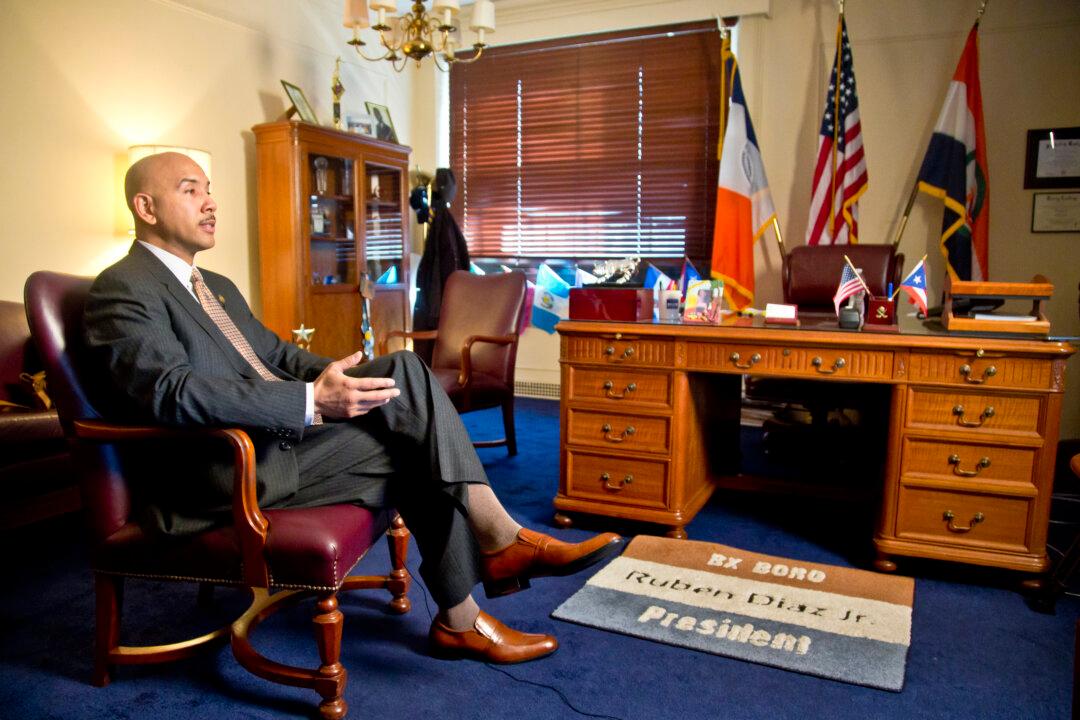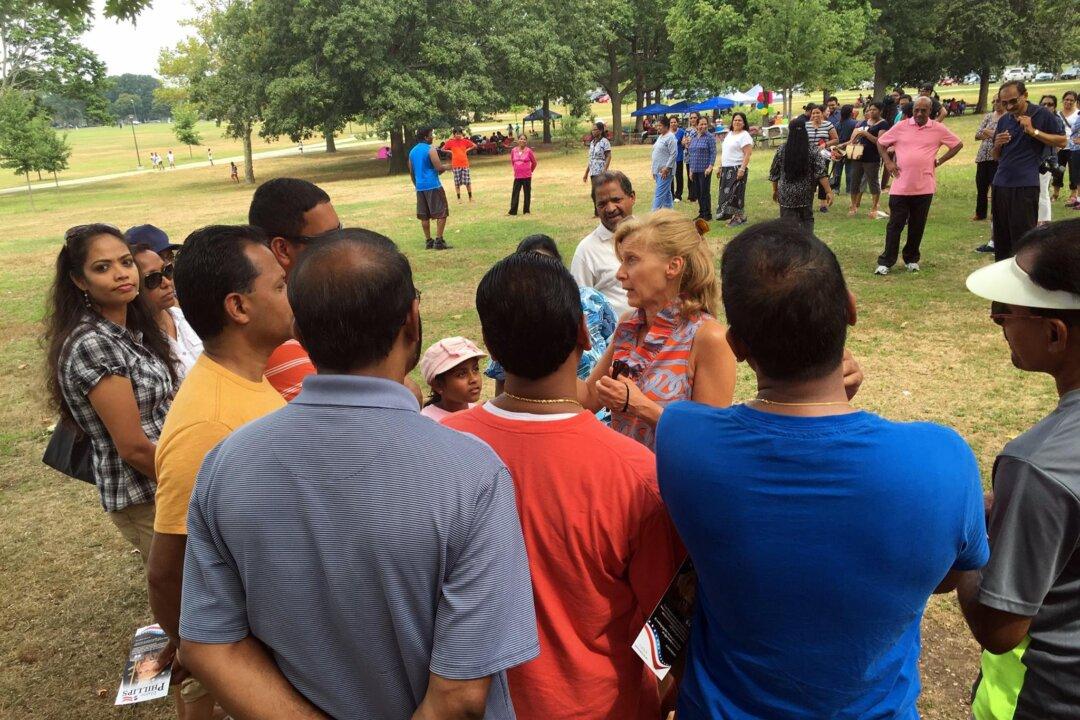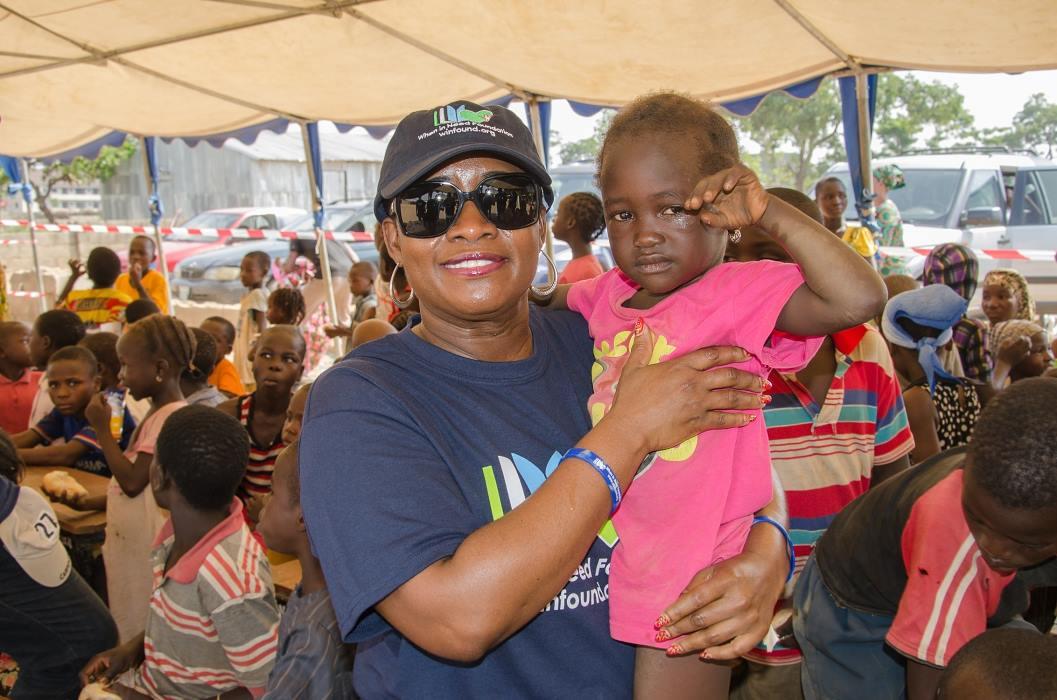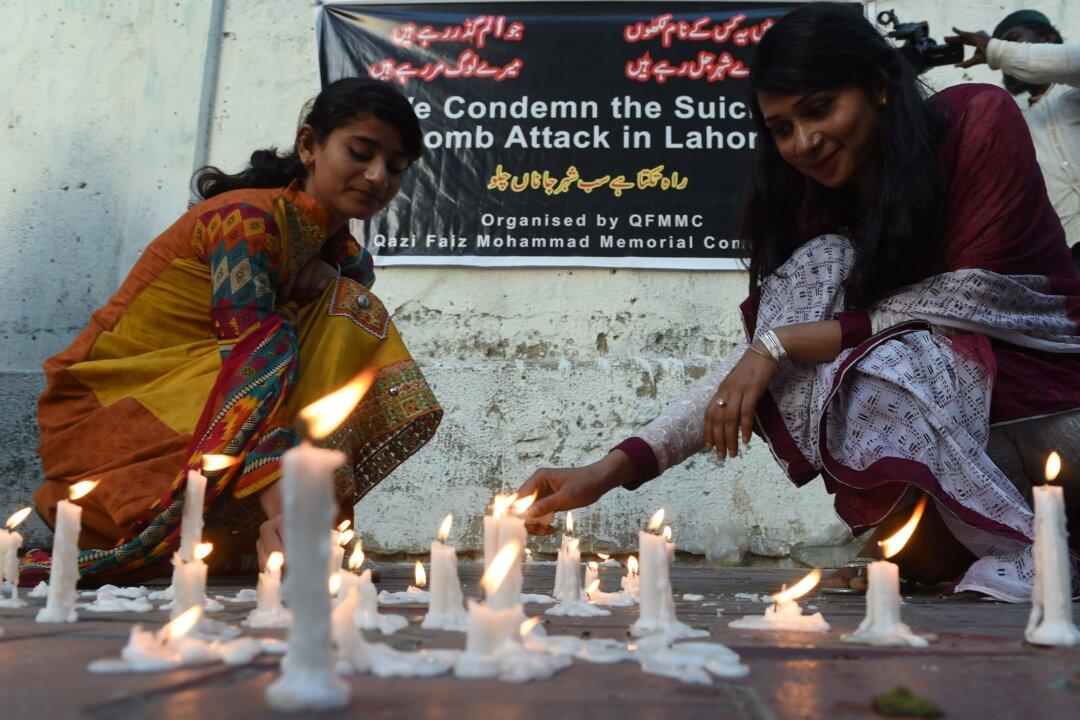Politicians are known to kiss babies, rather than their peers. Tell that, however, to Bronx Borough President Democrat Rubén Díaz, who planted what appeared to be a totally spontaneous kiss on the cheek of Manhattan Borough President Democrat Gale Brewer this past June 9.
In defense of Mr. Díaz, whom I interviewed last week in his Grand Concourse office, it could be argued that the kiss, widely viewed throughout the Internet, was more than appropriate for the event that ensued that day. Thousands of residents from both Manhattan and the Bronx had come to join Díaz and Brewer and several other elected officials to celebrate the reopening of The High Bridge, an overpass open to pedestrians and bike riders, connecting the Bronx’s High Bridge neighborhoods with Manhattan’s Washington Heights.
The bridge, which was first built in the middle 1800’s making it the oldest standing bridge in NYC, had been totally shut down following the building of the Harlem River Drive in the 1970’s.
Under the day’s circumstances, Díaz explained with a broad smile on his face, the kiss came naturally: “The peck on the cheek of my good friend and fellow Borough President Brewer came extemporaneously, because I was feeling very pleased to see us after forty long years finally once again reconnected in the Bronx’s south and Manhattan’s north sections…. I was also celebrating because that day was not only a day of joining two areas geographically, but also a day of joining two families together once again.”
Díaz, however, told me that he was aware that while the bridge’s reopening enjoyed strong support among both his and Mrs. Brewer’s respective constituents, he was also aware that some residents of Washington Heights had expressed concerns that the bridge could serve as a convenient route for lawbreakers in the Bronx to come to upper Manhattan and commit crimes.
“I take the concerns of every New Yorker living in any of the five boroughs very seriously, particularly in the area of crime and public safety”, said Díaz. “But it needs to be pointed out that crime in the Bronx is currently at the lowest levels since the 1960’s. So I think the concern about crime emanating from the Bronx is based more on the old Bronx than the new Bronx.”
Díaz quickly added, though, that he understands that when access in and out of neighboring communities is expanded, modifications in policing can be required. “I met with the Chief of the Police of the Bronx and the commanding officer of the Bronx side of the High Bridge, and my counterpart Gale Brewer has done the same thing on the Manhattan side…. There is now added police presence on the bridge, which should serve to continue to keep both communities safe.”
Legionnaires’ Disease
Díaz was soon to find his borough facing a crisis that would be far more difficult to resolve. In early July, as a result of what pathologists eventually found to be a bacterium infecting the cooling towers in at least eleven buildings in the South Bronx, a deadly outbreak of Legionnaires’ Disease spread throughout that low-income area.
Before New York City Department of Health officials had announced in late August that the epidemic had ended, twelve people had died from the disease and more than 125 had been seriously infected, but had survived.
To Díaz, the smile now removed from his face, the disease’s deadly toll might have been lessened had the city requested help from the federal government back in early July.




